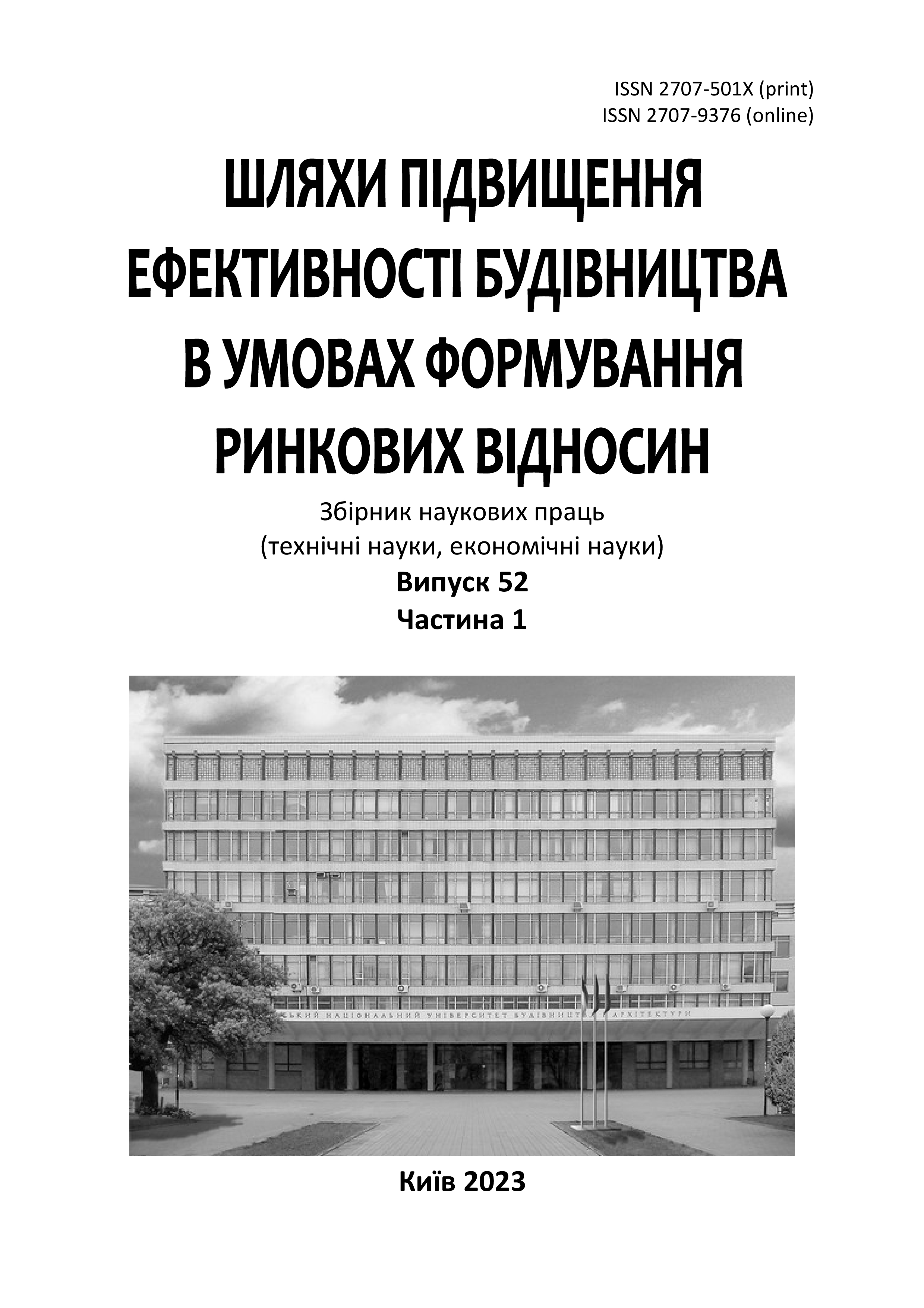Technology of arrangement of underground floors in existing buildings using compressed tube concrete piles
DOI:
https://doi.org/10.32347/2707-501x.2023.52(1).22-33Keywords:
reconstruction, underground floor, strengthening of foundations, pipe concrete pilesAbstract
The article considers the possibility of arranging underground surfaces in existing buildings using the technology of pressed pipe concrete piles. Traditional and innovative methods of performing works are analyzed, which allow to increase the technical indicators of frame and frameless buildings, to restore and increase the operational characteristics of buildings and structures. Special attention is paid to the technology of pressed-in tubular concrete piles and their application in the arrangement of underground floors by building the floor down as an alternative option for measures to increase the load-bearing capacity of the existing object and a promising direction in the reconstruction and modernization of the functional capabilities of buildings. The article is designed to introduce a relatively new method of restoring and strengthening existing foundations and the use of this method in the arrangement of underground floors and is of significant importance for specialists in the field of construction, architecture and design who are interested in expanding the capabilities of existing buildings and structures and optimizing their use in any -what are the functional purposes of these buildings. The use of pressed-in pipe concrete piles in this context can be an important tool for the modernization and improvement of existing facilities and structures, increasing the useful area without increasing the dimensions of the building in the axes on the one hand, and restoring and increasing the bearing capacity of the existing building foundations on the other. This method can help solve a whole niche of new issues, even of strategic importance, including the arrangement of bomb shelters under existing public buildings, such as kindergartens, schools, universities and other public places where bomb shelters are critically important parts of the building from the point of view of public protection today.
References
Урсол А.М. Підземні гаражі як частина інфраструктури міст. Сучасні проблеми архітектури та містобудування. 2017. 27(2), 15-23.
Джонсон Д.С., Сміт М.А. Використання вдавлювальних трубобетонних палm у будівництві інфраструктури. Міжнародний журнал інженерних досліджень. 2018. 12(3), 32-56.
Гусак В. П., Ковальчук О.І. Інноваційні технології влаштування підземних приміщень. Будівельний журнал. 2019. 18(4), 28-36.
Сміт І.В., Петров О.С. Вдавлювальні трубобетонні пали: технологія виробництва та застосування. Вісник будівельної науки. 2020. 24(1), 62-74.
Лі Ч., Вонг К. Інженерні аспекти влаштування підземних поверхонь. Міжнародний журнал інженерних досліджень. 2021. 15(2), 54-99.
Річардсон Д.І., Мартін С.Р. Підземні простори в міському плануванні: приклади інноваційних рішень. Архітектура та містобудування. 2018. 30(1), 37-58.
Ян, Л.С., Харріс Д.Р. Вплив підземних структур на екологію та довкілля. Екологічний журнал. 2019. 22(3), 66-89.
Шевченко В.Г., Коваленко С.П. Вплив влаштування підземних поверхонь на структурну цілісність будівель. Міжнародний журнал інженерних наук. 2022. 16(4), 107-134.
Давидюк Г.В. Сучасні тенденції в класифікації гаражних комплексів при їх будівництві. Будівельне виробництво. 2001. Вип. 42. С. 50-54.
Браун П.К., Холл М.Д. Технологія влаштування підземних поверхонь: сучасні методи та інноваційні підходи. Міжнародний журнал інженерних наук. 2020. 14(4), 82-125.
Сміт Д.А., Джонс Р.П. Практичні аспекти використання вдавлювальних трубобетонних паль у будівництві. Практичний журнал будівельної інженерії. 2021. 25(2), 39-68.
Гільєрмо А.Б., Санчес В.М. Інноваційні технології для розширення підземних приміщень. Сучасна будівельна індустрія. 2022. 19(3), 24-47.
Downloads
Published
How to Cite
Issue
Section
License

This work is licensed under a Creative Commons Attribution 4.0 International License.
Authors who publish with this journal agree to the following terms:
- Authors retain copyright and grant the journal right of first publication with the work simultaneously licensed under a Creative Commons Attribution License that allows others to share the work with an acknowledgement of the work's authorship and initial publication in this journal.
- Authors are able to enter into separate, additional contractual arrangements for the non-exclusive distribution of the journal's published version of the work (e.g., post it to an institutional repository or publish it in a book), with an acknowledgement of its initial publication in this journal.
- Authors are permitted and encouraged to post their work online (e.g., in institutional repositories or on their website) prior to and during the submission process, as it can lead to productive exchanges, as well as earlier and greater citation of published work (See The Effect of Open Access).

